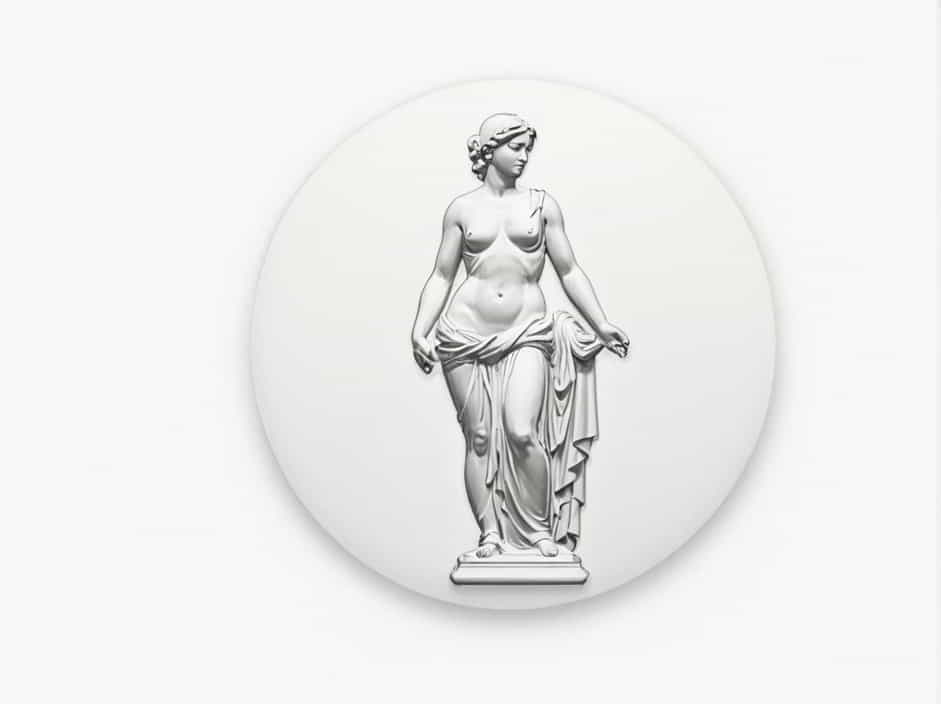The Venus de Milo is one of the most famous sculptures in the world. This ancient Greek statue, currently housed in the Louvre Museum in Paris, is admired for its mysterious beauty and classical elegance. Created around 100 BCE, it is believed to depict Aphrodite, the Greek goddess of love and beauty, known as Venus in Roman mythology.
Despite missing arms, the Venus de Milo remains an enduring symbol of artistic perfection. This topic explores its history, meaning, artistic style, and lasting impact on art and culture.
The Discovery of Venus de Milo
The Venus de Milo was discovered in 1820 on the Greek island of Milos (also called Melos). A local farmer found the statue buried in a field and soon after, French naval officers helped secure it for France. The sculpture was later presented to King Louis XVIII, who donated it to the Louvre Museum, where it remains today.
The statue’s missing arms have added to its mystery, leading to various theories about its original pose and purpose.
Who Created the Venus de Milo?
Although the artist of Venus de Milo is not confirmed, experts believe it was sculpted by Alexandros of Antioch, an ancient Greek artist. Initially, some thought it was the work of Praxiteles or Phidias, two renowned Greek sculptors, but further research pointed to Alexandros.
Unlike many other Greek sculptures, Venus de Milo does not have an inscription with the artist’s name, making its origins somewhat mysterious.
What Does Venus de Milo Represent?
1. The Goddess of Love and Beauty
Venus de Milo is widely believed to represent Aphrodite, the goddess of love, beauty, and desire. In Roman mythology, she is known as Venus, which is why the sculpture is called Venus de Milo (Venus of Milos).
Her graceful posture, serene expression, and flowing drapery reflect the ideals of feminine beauty and divine elegance in Greek art.
2. The Symbol of Classical Greek Art
This sculpture is an excellent example of Hellenistic Greek art, which focused on idealized human forms, movement, and emotion. The statue’s twisting pose and delicate drapery demonstrate the Greek mastery of creating realistic yet idealized figures.
3. A Representation of Mystery and Imperfection
One of the most intriguing aspects of Venus de Milo is its missing arms. No one knows exactly how they were lost or what they originally held, leading to various artistic and historical theories. Some believe she was holding an apple, a mirror, or fabric, while others suggest she was interacting with another figure.
Artistic Style and Features of Venus de Milo
Venus de Milo is considered a masterpiece of Hellenistic sculpture. Several key features make it unique and timeless:
1. Contrapposto Stance
The statue exhibits a contrapposto pose, meaning the weight is shifted onto one leg while the other remains relaxed. This creates a sense of natural movement and balance, making the figure appear more lifelike.
2. Detailed Drapery and Texture
Although partially nude, Venus de Milo wears a draped garment (peplos) around her lower body, which appears to be slipping off. This technique adds a sense of softness, realism, and elegance.
3. The Expression of Divine Beauty
Her face is calm and composed, with a slight smile and downcast eyes. This reflects the Greek artistic goal of capturing idealized beauty with a sense of mystery and serenity.
Why Are the Arms Missing?
One of the greatest mysteries of Venus de Milo is the missing arms. When the statue was discovered, the arms were already gone, and no records indicate how they were lost.
Some theories suggest:
- They were broken off in ancient times due to natural damage.
- They were lost during transportation to France.
- The statue was originally designed with removable arms.
Without the arms, the statue’s meaning remains open to interpretation, adding to its allure and intrigue.
The Influence of Venus de Milo on Art and Culture
1. A Symbol of Feminine Beauty
Venus de Milo has long been considered a symbol of timeless beauty. Her form has influenced countless artists, fashion designers, and sculptors throughout history.
2. Inspiration for Modern Art
Many modern and contemporary artists have reinterpreted Venus de Milo in different styles. Salvador Dalí, for example, created a surrealist version of the statue with drawers placed in her body, symbolizing hidden desires.
3. A Cultural Icon
Venus de Milo appears in films, advertisements, fashion, and pop culture. Her image is often used to represent grace, mystery, and classical elegance.
Venus de Milo vs. Other Famous Greek Sculptures
While Venus de Milo is one of the most famous Greek sculptures, it is often compared to other masterpieces:
| Sculpture | Description | Key Difference |
|---|---|---|
| Venus de Milo | Goddess of love, missing arms | Hellenistic elegance |
| Winged Victory of Samothrace | Dynamic pose, symbol of victory | More dramatic movement |
| Discobolus (The Discus Thrower) | Athletic male figure in action | Focus on sports and strength |
| Laocoön and His Sons | Emotional and dramatic sculpture | Depicts struggle and pain |
Each of these sculptures represents different aspects of Greek art and philosophy, but Venus de Milo remains one of the most recognized and admired.
Where to See Venus de Milo Today
Venus de Milo is permanently displayed at the Louvre Museum in Paris, where millions of visitors admire it every year. It is one of the most visited and photographed artworks in the world.
At the Louvre, the statue is showcased in a dedicated space with proper lighting, allowing visitors to appreciate its fine details and craftsmanship.
The Venus de Milo is more than just an ancient statue—it is a symbol of classical beauty, mystery, and artistic excellence. Despite its missing arms, it continues to fascinate historians, artists, and visitors worldwide.
With its elegant form, balanced composition, and timeless appeal, Venus de Milo remains one of the greatest masterpieces of Greek sculpture, ensuring its place in art history for generations to come.
